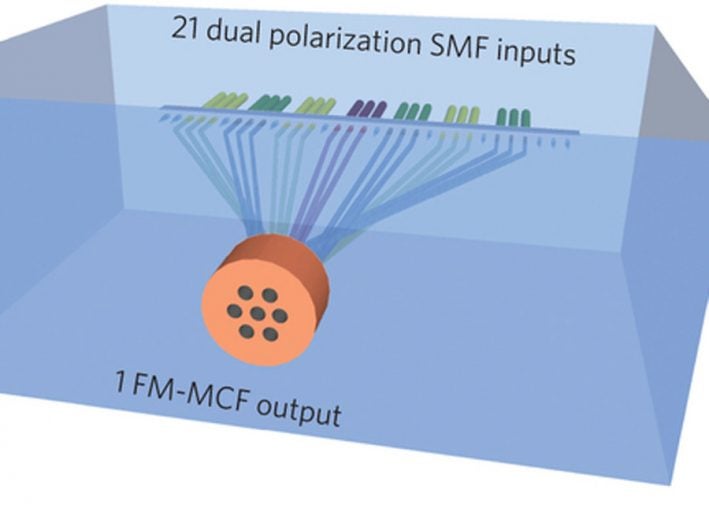A team from UCF’s CREOL (Center for Research and Education in Optics and Lasers) and Eindhoven University of Technology in The Netherlands has successfully demonstrated a means by which future optical networks could gain extra capacity and transmit large amounts of data over long distances.
By exploiting a new method for multiplexing data, known as space-division multiplexing, the research led by UCF’s Rodrigo Amezcua Correa and Chigo Okonkwo of the Electro-Optical Communications group in The Netherlands, has demonstrated a major increase in transmission capacity of optical fibers to avoid a capacity crunch.
In their work published Monday in Nature Photonics, entitled “Ultra-high-density spatial division multiplexing with a few-mode multicore fibre,” the researchers discuss the key constituents of their successful experiment.
By employing compact waveguide multiplexers and energy-efficient digital signal processing algorithms, they demonstrated the viability of spatial multiplexing to reach a data rate of 5.1 terabytes on a single wavelength over a single fiber. Amezcua Correa said that by combining this approach with a system of using 50 wavelength carriers on a dense grid, a gross transmission of 255 terabytes over the fiber link is achieved.
Others from UCF on the team are research scientist Jose Enrique Antonio Lopez, graduate research assistant Cen Xia, and professors of optics Guifang Li and Axel Schülzgen.
In addition to the universities, the work as reported in Nature Photonics was also partially funded by the European Union Framework 7 MODEGAP project and the National Basic Research Programme of China.
The team is now working on new fibers, fiber amplifiers and all-fiber multiplexers for optical-fiber transmission systems to benefit future networks, he said.
